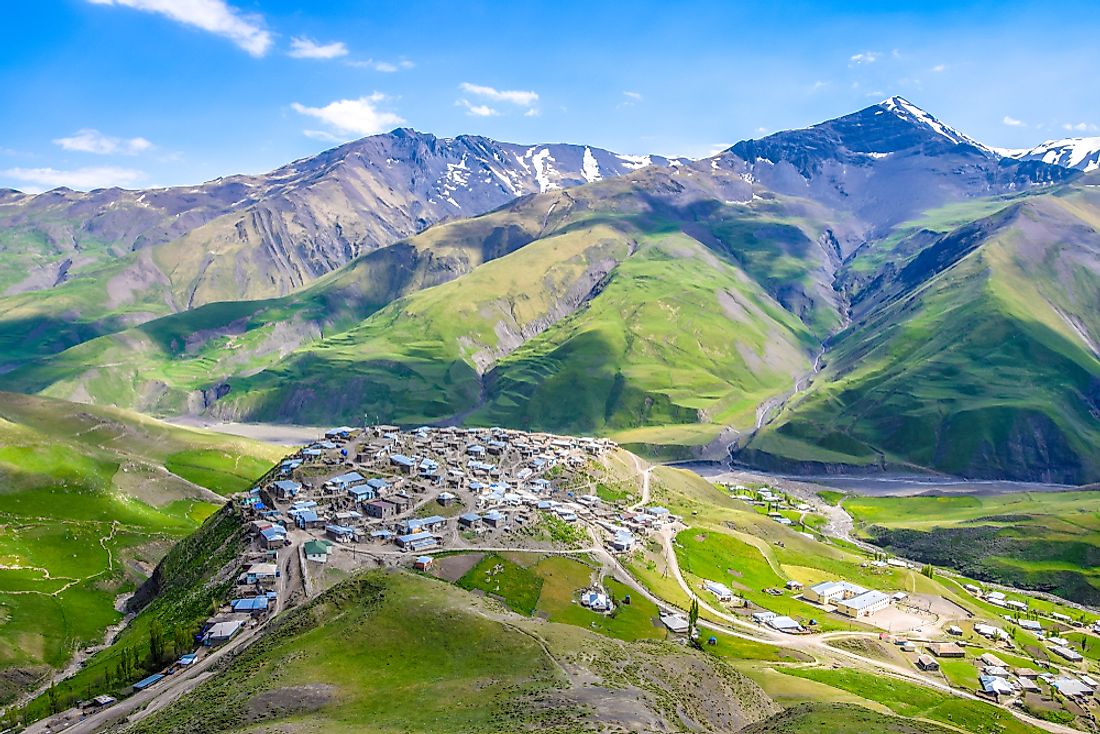What is the Climate of Azerbaijan Like?

Azerbaijan is a country at the crossroads of Western Asia and Eastern Europe. It shares its borders with Russia, Georgia, Armenia, and Iran. Azerbaijan also has a coastline along the Caspian Sea. Azerbaijan has diverse climatic conditions that are influenced by air masses from different directions, the effects of solar radiation, the proximity of the Caspian Sea, and the unique geographical location of the country.
Geography
Azerbaijan is typically a mountainous country and is home to mountain ranges such as the Lesser Caucasus, Greater Caucasus, the Northern Iranian, and the Talysh Mountains. The lowland regions like the Kur-Araz lies between the Lesser and the Greater Caucasus and extends to the Caspian Sea in the eastern portion of the country.
The Greater Caucasus Mountains are in in the northern part of the country. They extend from the northwestern region to the southeastern region and shields portions of the country from northern air masses. As a result, most of the plains and foothills in the country experience a subtropical climate.
Air Circulation
Air masses have a significant impact on Azerbaijan's climate. Cold air masses include the temperate Siberian anticyclones, the Kara and Scandinavian arctic anticyclones, and the maritime Azores. Similarly, tropical hot air masses include the southern cyclones, subtropical anticyclone, central Asian anticyclone. Different air masses approach the country from different directions because of the country's geography.
Spring
Between March and May, the weather in Azerbaijan starts to get warmer. The region's plains are the first to experience while in the mountainous areas it comes a little later. In the first half of the season, the weather is unpredictable, shifting rapidly from warm to cool temperatures. During spring, frosts are typically short, and in April the plants begin to blossom under the soft sunshine. In May, it is already summer, particularly in the Kur Araz lowlands and Absheron Peninsula where temperatures during the day are about 68 degrees Fahrenheit. By the end of the spring season, warmth is experienced in the Lowlands first while the mountainous area there is a peak of seasonal change in nature and possibly frost during the night. During this time people no longer put on topcoats, and tourists visit the country during the spring season to enjoy the Novruz holiday, an Azerbaijani tradition that honors the arrival of spring.
Summer
Summer is the longest season in the country and is typically hot and dry. The summer season runs from June to August and temperatures in June, particularly in the lowlands, average about 81 degrees Fahrenheit while in the coastal areas the temperatures are slightly cooler. Hot tropical air masses sometimes bring heat which can raise temperatures to 95 degrees Fahrenheit. The low plains, particularly in the exclave Nakhchivan Autonomous Area, usually experience more moderate temperatures.
In August the temperatures are slightly cooler, falling by about 5 degrees Fahrenheit. The average temperatures in summer vary depending on altitude.
Autumn
The autumn season in Azerbaijan runs from September to October. In the lowland areas, the season is similar to summer and temperatures drops to about 68 degrees Fahrenheit. In October most of the country receives precipitation, although it is low particularly in the lowland plains while it is higher in the mountain areas. November sees a drop in temperatures, and precipitation changes, especially in the lowland foothills. In the mountainous regions, the snow cover begins in November, particularly in the Alpine regions.
Winter
Winter in the country is mild and starts from December to March. In the lowland plains, winter sets in the middle of December while in the high altitudes it begins in November. Temperatures hardly fall below 32 degrees Fahrenheit. Severe frost is rare. Snow cover is experienced briefly and sometimes doesn't fall at all. However, the Foehn winds are frequent during the season.
January is typically the coldest month and in regions like the Asheron Peninsula temperatures average about 39 degrees Fahrenheit and vary with the altitude. Altitudes of about 6,500 feet above sea level average about 21 degrees Fahrenheit while in altitudes exceeding 9,800 feet above sea level temperatures average about 10 degrees Fahrenheit. Frost is experienced in the mountainous region when temperatures reach -4 degrees Fahrenheit and in the lower foothills temperatures could reach 14 degrees Fahrenheit.
Environment Issues
In the early 20th century oil was discovered in Azerbaijan and as a result, led to the development of the industrial sector which in turn accelerated the rate of pollution in the country. Azerbaijan was part of the Soviet Union, and Baku was the industrial capital of the vast country. Moscow could order the production of industrial products to be manufactured in Azerbaijan. Such arbitrary and unilateral control of industrial manufacturing led to environmental neglect and higher rates of pollution which caused significant damage to the environment. However, since Azerbaijan gained independence, the government has taken drastic measures to preserve the environment.











